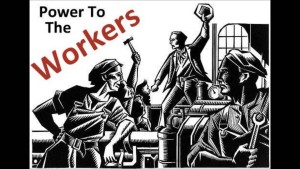Jim Ingram (b.1912): Life and Labour
Ingram’s leg and sight disability lead to feelings of pride and accomplishment each time he achieves something other children, without disabilities, achieve. For example Ingram explains ‘At harvest-time I went gleaning. With the other children I searched the fields for loose grain which I collected in a bag. We were given eggs as payment.’ (5). This shows a sense of being part of a group and belonging to something with other people. Similar to the Marxist understanding that part of being working class was class consciousness and uniting as class behind ideas of reform.

However, Robert Roberts challenges this idea by suggesting that not all of the working class wanted reform and they were only ‘wishing for nothing more than to be ‘respectful and respected’.’ (Roberts, 31). Roberts’s idea resonates in the memoir as during the war people were less likely to fight for reform due to the hardships the war had presented them with. This is one of the main focuses of Ingram’s memoir as he talks about the strain placed on his family and domestic life when his mother had to go to work while his father was away fighting. Ingram had to help his mother by contributing to the household chores: ‘Mother did not get back from work until after the shops had closed, so I had to help with the shopping’ (8). There was also a struggle to find any stability as Ingram reveals ‘Mother and I led a wandering life during those years, for we had no home of our own, and lodgings were hard to get’ (8). This suggests Ross was correct in assuming that not all working class people wanted reform, some merely wanted to get by.

There are also examples of hardships after the war in the memoir as the family had to move to Canada for better opportunities as the British economy had declined ‘there were no houses to rent, work was difficult to obtain, and the best jobs had been taken by men who stayed at home’ (9-10). During this time of hardship, there was no place for leisurely activities. However, as ‘life improved’ (12), his mother and father began to enjoy taking part in socialising outside of work. Ingram reveals his ‘Father’s life revolved round the local pub, football pools, racing and gambling’ (20) while his ‘Mother’s life was her home, her neighbours, her local mission hall’ (20). The contrast in male and female leisure links to Carolyn Steedman’s argument that class identity is gained through consumption as well as work. Ingram’s family’s class identity is mixed up as they have already moved down the social ladder and after they lose contact with family it becomes even more confusing. They seem to float around without a class identity until we are given an insight to their leisurely preferences which gives us more of a sense of who they are in society. This suggests that both family and consumption plays an important role in your class identity.
Despite the hardships families faced, Ingram’s education did not suffer due to being forced into labour by fear of poverty from a young age. Ingram, motivated by his disability, breaks out of the working class stereotype and becomes self educated. This instills pride in himself that he has managed to accomplish so many things.
Although work is not a central theme in the memoir, it plays an important role in telling us the ways we can establish class identity. It also contradicts the social discourse of the working classes as idle and dependent as Ingram works his way up the social ladder through hard work and his own motivation that he ‘could accomplish something’ (20).
Bibliography
The Autobiography of the Working Class: An Annotated, Critical Bibliography, ed. by John Burnett, David Vincent and David Mayall (Brighton: Harvester, 1984, 1897, 1989) 3 volumes, 2:430.
Ingram, Jim. ‘A Wartime Childhood’. Brunel University. 1987.
Roberts, Robert. The Classic Slum: Salford Life in the First Quarter of the Century. Penguin Classics. 1971.
Steedman, Carolyn. Landscape for a Good Woman: A Story of Two Lives. 1986.
Image reference: (Accessed 30/11/2015)
Image reference: (Accessed 30/11/2015)

Leave a Reply